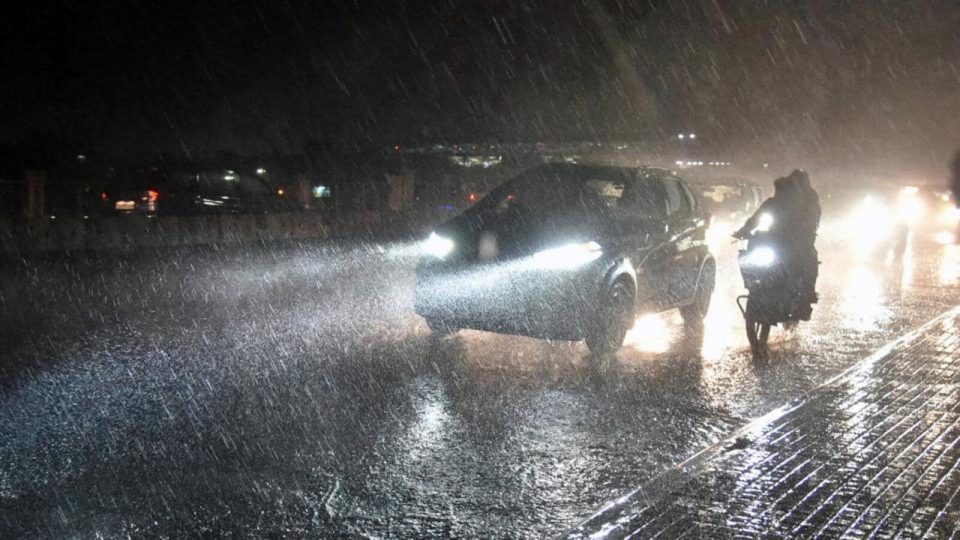Highly uneven rainfall so far in the southwest monsoon is impacting the cultivation of paddy and other crops, particularly in the Gangetic plains of Uttar Pradesh, Bihar, Jharkhand and West Bengal, although they were 8% more than normal across the country, India Meteorological Department data showed.
There was 16% rain deficiency over eastern and northeastern India; 17% excess over central India; 28% excess over south peninsula and 5% excess over northwest India so far.
In July, there was 16.9% excess rain over the country with 10.8% excess over northwest India; 42.7% excess over central India; 60.4% excess over peninsular India and 44.7% deficiency over east and northeast India as on July 31. Rainfall was lower by 8% of average in June.
“Monsoon conditions were very good in July, which is reflected in above normal rains over central and peninsular India, but there is high deficiency over states in the Gangetic plains,” said M Mohapatra, director general of the weather office. “The month has not been good for these states.”
Till July 31, Uttar Pradesh had a rain deficiency of 46%, Jharkhand 49%, Bihar 39% and West Bengal 26%.
“In the past two days, the monsoon trough had shifted northwards, when there was good rain over northwest India and some rain over Uttar Pradesh and Bihar,” Mohapatra said. “But the deficiency is so high in these states that marginal rain did not help. In the next 2-3 days, when the monsoon trough is near the Himalayan foothills, we can expect some more rain over Bihar and Uttar Pradesh, but deficiency may not be covered.”
The uneven distribution of rainfall spells bad news for the country’s farm sector. There was hardly any rain over eastern India in July, the crucial sowing period for paddy.
“Till the middle of August, sowing will not happen in most parts of eastern India. This will have widespread impacts on farmers as well as common people,” GV Ramanjaneyulu, executive director at the Centre for Sustainable Agriculture in Hyderabad, said on July 29. “One of the problems is that it will also delay rabi (winter) crops as we are expecting a very long dry spell in between until mid-August..
Farmer who have already sown paddy are expected to face difficulties. “This will not only impact paddy but also soya in Madhya Pradesh and several other pulses including red gram, green gram and black gram. Red gram especially is vulnerable to this lag. Moreover, oil seeds like groundnut and sunflower are also likely to be affected,” Ramanjaneyulu added.
Till after mid-July, central India had received extremely heavy rains, which led to damage and washing out of crops over several parts of central and peninsular India. “These impacts will likely to lead to higher inflation in food prices,” Ramanjaneyulu said.
“July rains managed to cover the deficiency of June and record surplus so we had a good July except in pockets of East. Now the first 10 days of August we are expecting monsoon surge over peninsular India once again. Two cyclonic circulations are likely to form over southwest Bay of Bengal and southeast Arabian Sea along Kerala coast. There may be extremely heavy rain over Kerala and coastal Karnataka in the coming days and heavy rain over central India,” said Mahesh Palawat, vice-president, climate and meteorology, Skymet Weather
The western end of the monsoon trough, an elongated area of low pressure, is lying north of its normal position and the eastern end is running close to foothills of the Himalayas. The trough is likely to be north of its normal position or along the foothills of Himalayas during next three days. The eastern end is likely to shift southwards thereafter.
A western disturbance is lying over central parts of Afghanistan. A north-south trough is running from south Chhattisgarh to the Comorin area in Telangana, Rayalaseema and Tamil Nadu at lower tropospheric levels. A shear zone in middle tropospheric levels is likely to develop across extreme south peninsular India from August 2.
Under the influence of these systems, widespread rainfall is likely over Uttarakhand till August 2; Jammu and Kashmir on July 31 and August 1; Punjab, Haryana, Chandigarh, Delhi and Himachal Pradesh on July 31; and eastern Uttar Pradesh on August 1 and 2.
Heavy rainfall also likely over Uttarakhand on July 31. Widespread rainfall is likely over Bihar, Jharkhand and Gangetic West Bengal till August 2; Odisha on August 1 and 4; sub-Himalayan West Bengal, Sikkim and Arunachal Pradesh till August 3; and Assam, Meghalaya, Nagaland, Manipur, Mizoram and Tripura till August 4.
Widespread rainfall is likely over Telangana on August 3 and 4; coastal and north interior Karnataka and Lakshadweep during August 2 and 4; south interior Karnataka, Tamil Nadu, Puducherry, Karaikal, Kerala and Mahe till August 4; and over Rayalaseema on August 1 and 2.
Heavy rainfall is also likely over coastal Karnataka on August 3 and 4; north interior Karnataka during August 2 and 4; Kerala and Mahe during August 1 to 4; south interior Karnataka on August 4; and Tamil Nadu, Puducherry and Karaikal till August 4. Extremely heavy rainfall is likely over Kerala and Mahe till August 4.


